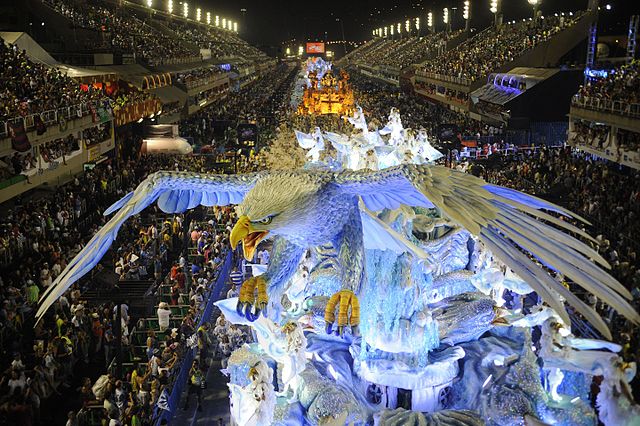Sambadrome Marquês de Sapucaí
The Sambadrome Marquês de Sapucaí is a purpose-built parade area built for the Rio Carnival in Rio de Janeiro, Brazil. The venue is also known as Passarela Professor Darcy Ribeiro or simply the Sambódromo in Portuguese or Sambadrome in English. It is located in the downtown area of Cidade Nova in Rio de Janeiro, and is the place where samba schools parade competitively each year during the Rio Carnival. The parades attract many thousands of Brazilians and foreign tourists each year, and the structure is also used as a multi-purpose performance venue. The structures of the Sambadrome were designed by the architect Oscar Niemeyer (1907–2012), and represent his first major work after the end of the Brazilian dictatorship of 1964–1985.
Bleachers of the Sambadrome
A panoramic shot taken from the top of Sector 9 during the Grupo de Acesso A parade. The school parades from the right to the left, with the arch visible at the end. The VIP camarote seating is visible across the way.
Carnival at Rio
Aerial photo
The Carnival in Rio de Janeiro is a festival held every year before Lent; it is considered the biggest carnival in the world, with two million people per day on the streets. The first Carnival festival in Rio occurred in 1723.
A float at Rio Carnival, 2014
Parade of Mangueira, one of the most traditional samba schools in the Rio Carnival
A typical performer of Samba dance
Drum Queen






